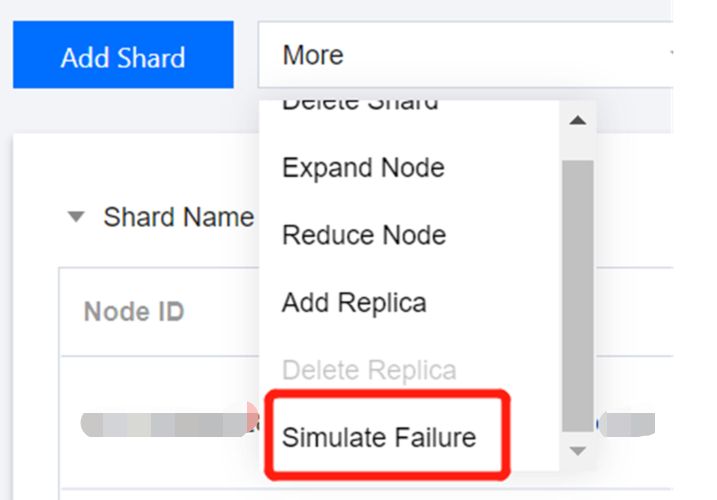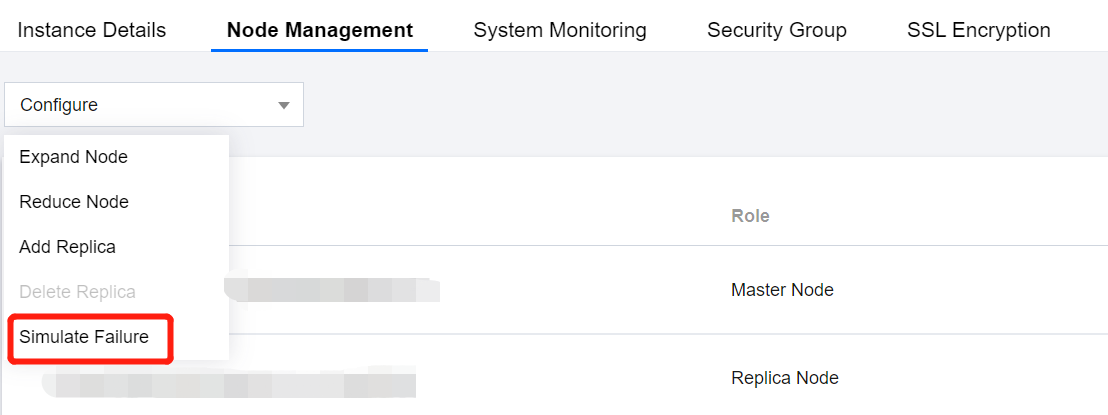TencentDB for Redis®
- Release Notes and Announcements
- Product Introduction
- Product Series
- Purchase Guide
- Getting Started
- Operation Guide
- Access Management
- SDK Connection
- Daily Instance Operation
- Upgrading Redis Edition Instances
- Managing Redis Edition Nodes
- Multi-AZ Deployment Management
- Backup and Restoration
- Downloading Redis Edition Backups
- Data Migration for Redis Edition Instances
- Account and Password (Redis Edition)
- Parameter Configuration
- Redis Parameter Operations
- Network and Security
- Monitoring and Alarms
- Redis Edition Event Management
- Global Replication for Redis Edition
- Performance Optimization
- Development Guidelines
- Connection Pool Configuration
- Command Reference
- Commands Supported by Different Versions
- Additional Command Operations in the Redis Edition
- Troubleshooting
- Connection Exception
- Performance Troubleshooting and Fine-Tuning
- Practical Tutorial
- API Documentation
- Making API Requests
- Instance APIs
- Parameter Management APIs
- Other APIs
- Backup and Restoration APIs
- Monitoring and Management APIs
- Service Agreement
DocumentationTencentDB for Redis®Operation GuideManaging Redis Edition NodesInspect Node Information
Inspect Node Information
Last updated: 2024-11-05 10:10:15
Overview
TencentDB for Redis® allows you to view the instance node information, including: node ID, role, running status, and used capacity. It also supports node management, which includes: adjusting node specifications, promoting replica nodes to primary nodes, enabling read-only for replicas, and switching due to primary/secondary failures. Ops personnel can manage instance nodes efficiently and locate related anomalies during node operation through node management.
Version Description
TencentDB for Redis® 4.0, 5.0, 6.2 versions standard architecture and cluster architecture instances, whether it's a single availability zone or multiple availability zones deployment, all support node management.
TencentDB for Redis® 2.8 version does not support node management.
Viewing Node Information
1. Log in to the TencentDB for Redis® console.
2. Above the Instance List on the right, select the region.
3. On the Instance List, find the target instance whose node you need to view.
4. Click on its Instance ID to enter the Instance Details page, then click the Node Management tab.
Standard Architecture

Parameter Name | Parameter Description |
Node ID | The node ID number of the database instance. |
Roles | The role of the current node, primary node or replica node. |
Availability Zone | The availability zone to which the current node belongs. |
Monitoring | click  |
Status | Running status of the current node. |
Slots | Range of Slots on node. |
Memory usage | Situation of memory capacity use on node. |
Cluster Structure
Single Availability Zone

Multiple Availability Zones

Parameter Name | Parameter Description |
Shard Name | The shard name of a database sharded cluster. The shard name is concatenated from InstanceID_shard_Shard Number, and the shard number starts from 1 and is orchestrated in natural number order. For example: crs-mufy****_shard_1. |
Node ID | The Node ID of the database instance, automatically generated by the system, serves as the unique identifier for the node. |
Node Group Name | This parameter is displayed in cluster architectures spanning multiple availability zones. Multiple primary nodes from different shards logically form one primary node group, while replica nodes form a replica node group (replica set). Each node group name is concatenated from 'ng-number', where the number starts from 00 and is orchestrated in natural number order. Each node group name represents the primary-secondary role of the node. |
Roles | This parameter represents the primary-secondary role of the node. It is displayed in cluster architecture within a single availability zone. |
Availability Zone | The availability zone where the node is located. Multi-AZ instances will mark the primary availability zone or backup availability zone. |
Monitoring | click  |
Status | Running status of the current node. |
Slots | Range of Slots on node. |
Memory Usage | Situation of memory usage on node. |
More Actions
Configuration Adjustment
On the Node Management page, you can adjust the specifications of the instance node, including: expanding/reducing node capacity, adding/removing replicas, adding/removing shards (cluster configuration) and other operations. For how to configure specific parameters, see Changing Instance Specifications.

Promoting A Replica Node to Primary Node
For a single availability zone deployment instance, TencentDB for Redis® supports manually promoting a replica node to primary node; for multi-availability zone instances, TencentDB for Redis® supports promoting a replica node to primary node; the cluster configuration supports promoting a replica node group to primary node group, and promotes the original replica node or replica node group's availability zone to primary availability zone. For specific operations, see Manually Promoting to Primary Node.

Simulate Failure
To facilitate failure simulation tests for your service, TencentDB for Redis® provides a feature for simulating failures in instances deployed across multiple availability zones. You can use the failure simulation feature on the Node Management page. For specific operations, see Failover.
The entry for the failover simulation for Cluster Architecture instances:

The entry for failover simulation in Standard Architecture instances:

Read-Only Replica
On the Node Management page, when the number of replica database instances is greater than or equal to 1, you can enable automatic read-write separation to improve the read performance vertically. For specific operations, see Enabling Read-Only Replica.

Related APIs
API Name | API Description |
Query instance node information | |
Query Redis node detailed information |
Was this page helpful?
You can also Contact Sales or Submit a Ticket for help.
Yes
No

